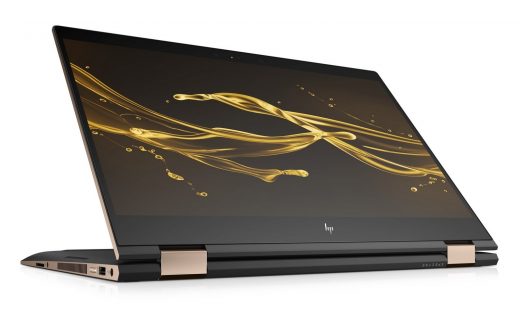The best lightweight gaming laptops

Back at CES a few months ago, I wrote that we were entering a golden age in lightweight gaming laptops. It started last year with NVIDIA’s small, power-efficient Max-Q graphics, followed by Intel and AMD’s surprising team-up on Core H with Radeon RX Vega M graphics. Now Intel has ramped up the power further with its six-core, eighth-gen Core-i7 and Core-i9 portable processors. Over the past few months, a slew of lightweight gaming laptops using this tech have hit the market. But which ones are best? Let’s take a look.
The basics
First, let’s define the category of lightweight gaming laptops. They should have discrete GPUs by NVIDIA or AMD, as opposed to just integrated graphics. They should also weigh less than five pounds, or else you’re getting into regular, possibly backbreaking gaming laptop territory. Those are the basics, but models with better performance, longer battery life and smaller profiles will obviously be the most desirable. Other features, like a touchscreen, are icing on the cake.
The defining traits I mentioned — discrete graphics and a small size — benefit not just gamers on the go, but folks who do video editing, 3D animation, VR and other jobs that require extra GPU power. With two such defined markets, many of the laptops on this list carry understated styling, rather than the flashy looks common to gaming-first models. As it happens, many gamers actually prefer this less-is-more vibe anyway.
Modern games, however, still require maximum power. To deliver that muscle without killing your battery, NVIDIA launched Max-Q versions of its GTX 1050, 1060, 1070 and 1080 chips. They run at clocks speeds 10 to 15 percent lower than the full versions (depending on how the manufacturer tweaks it) but otherwise have the same specs. So performance for the GTX 1070 Max-Q GPU ranks somewhere between the full GTX 1060 and GTX 1070 versions, but closer to the full GTX 1070 for most models tested so far.
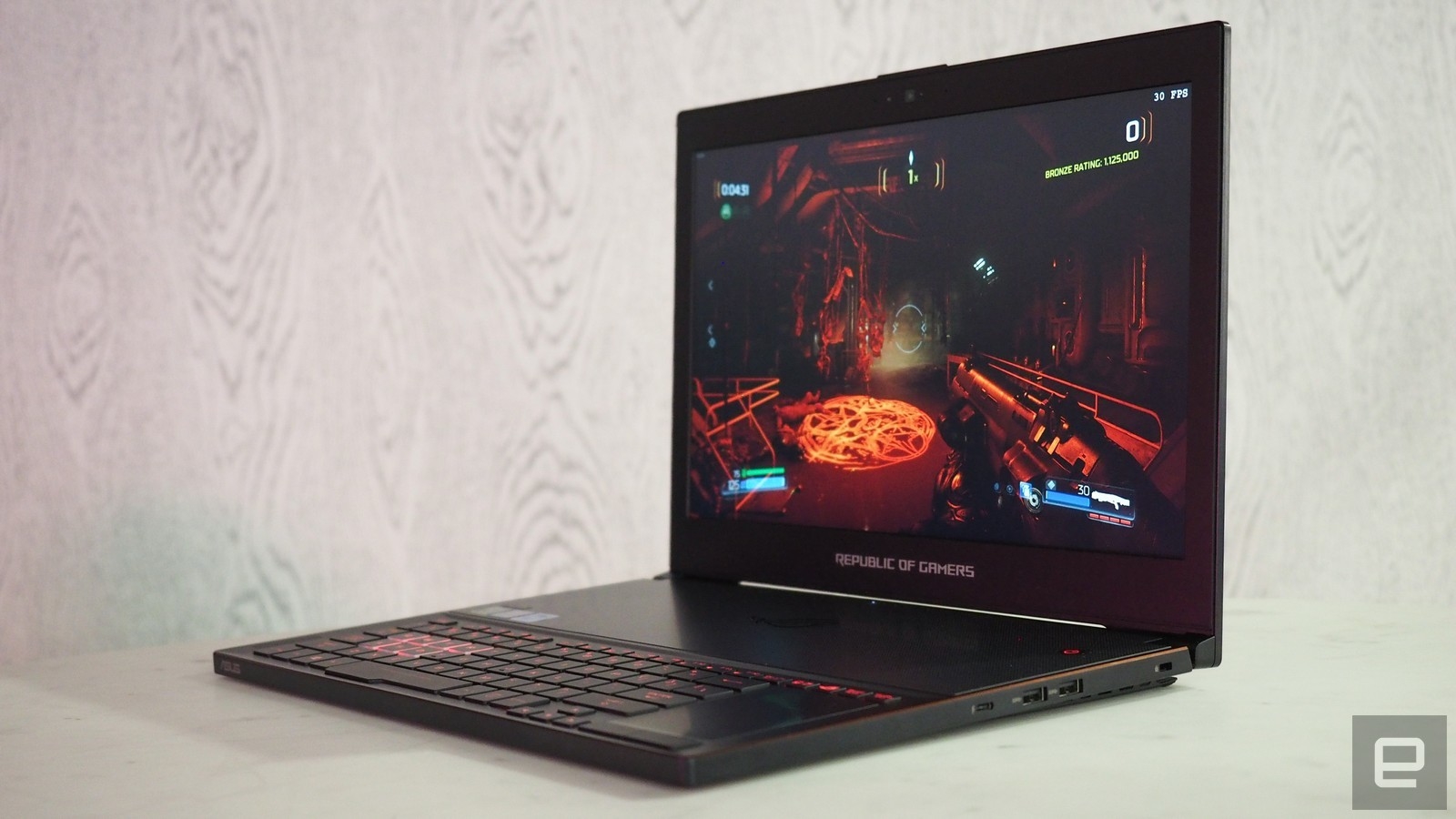
Intel, meanwhile, worked with AMD to integrate an eighth-generation CPU, AMD Vega graphics and GDDR5 memory onto one chipset. The result is a laptop with GTX 1050 and 1060 levels of power, Intel claims, but lower power consumption than NVIDIA’s chips. Dell and HP, to start with, are using Vega M GL graphics (equivalent to around GTX 1050 Ti) for their latest 2-in-1 models and are claiming stellar battery life, even on 4K touchscreens.
The latest NVIDIA, AMD and Intel tech is nice, but fitting power into a small form factor still means compromising. You’ll never have as much battery life or as compact a design as with an ultraportable, nor will you get as much performance as on a seven-pound gaming laptop. Heat and fan noise are other unavoidable side effects.
Still, you can now get nearly everything you want. There are a number of models in the $2,000 price range with powerful NVIDIA GTX 1070 Max-Q graphics that weigh just over four pounds and still manage to offer decent battery life. If you need more power, you can step up to GTX 1080 Max-Q, and if battery life and budget are more of a concern, go down to GTX 1050/1060 Max-Q, Vega, or NVIDIA’s MX150 on the very low end. With all that in mind, let’s take a look at our top picks.
The best lightweight high-performance laptops
Until AMD’s dedicated Radeon Vega Mobile GPU arrives, NVIDIA graphics are the only way to get top gaming performance or run Oculus or Vive for VR. Thanks to Max-Q, you can fit a GTX 1080 GPU into a sub-five-pound laptop, but the sweet spot for GPUs is NVIDIA GTX 1070 Max-Q (MSI, Gigabyte and other models) and regular GTX 1060.
You might notice that several of these laptops have similar styling and the same 144Hz screen and chip options, showing that lightweight gaming laptops (like other PC categories) are subject to commoditization. That doesn’t strike me as a huge deal, though, as long as the performance is there.
Gigabyte Aero 15X
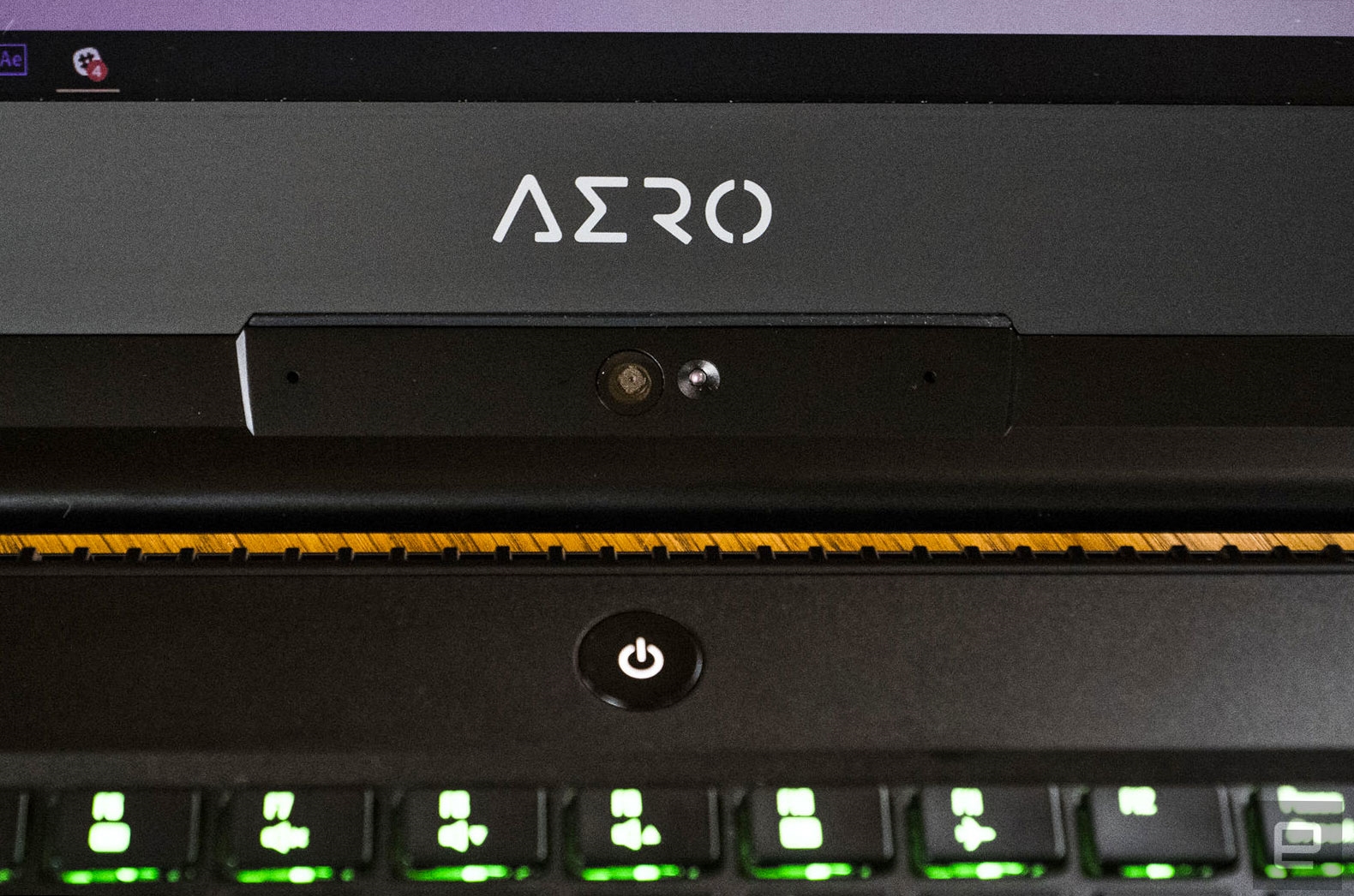
The 4.4-pound, $2,200 Gigabyte Aero 15X with NVIDIA GTX 1070 Max-Q graphics topped a lot of lists last year because of its long battery life compared with rival machines. The addition of an Intel six-core, eighth-gen i7-8750H in the latest version and a 144Hz screen makes it that much more interesting. The performance is better for gaming, VR and video editing, and it retains the excellent battery life, great keyboard, generous port offering and low-key styling. That styling might too OEM-generic for some, though, and the relatively high price and middling touchpad are also marks against it.
MSI GS65 Stealth Thin
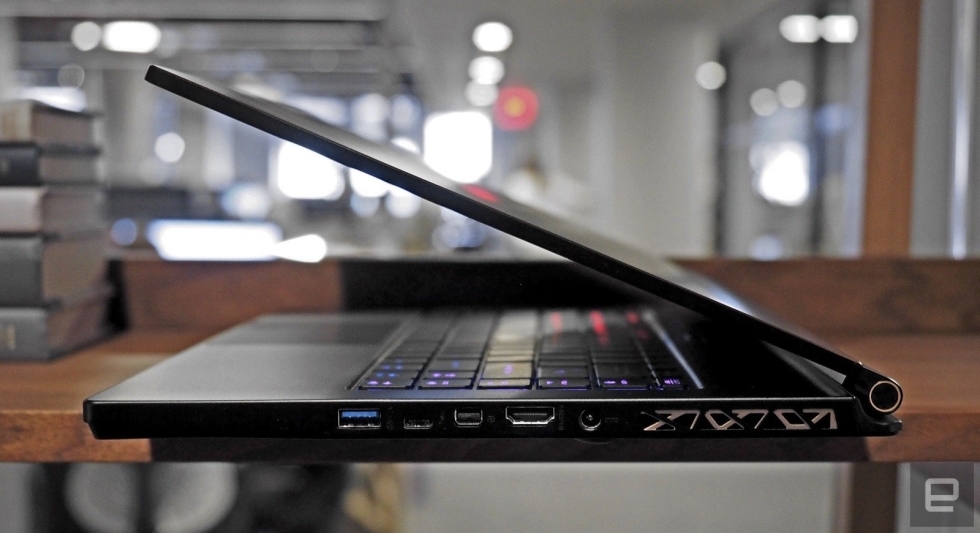
MSI’s first lightweight gaming laptop with GTX 1070 Max-Q graphics, the GS63VR, did nearly everything well, but the battery life was mediocre, thanks to a smallish 52Wh cell. The company rectified that issue with the $2,099 MSI GS65 Stealth Thin, also packing the six-core i7-8750H CPU. Runtime is now much longer with the addition of an 82Wh battery, and yet it’s actually lighter than the last model, at 4.1 pounds, because of the slimmer bezels and case (which look nice, to boot). The performance is as great as you’d expect for gaming, but battery life isn’t quite as long as on the Aero 15X. What’s more, it can get pretty hot on the bottom.
Razer Blade (2017)
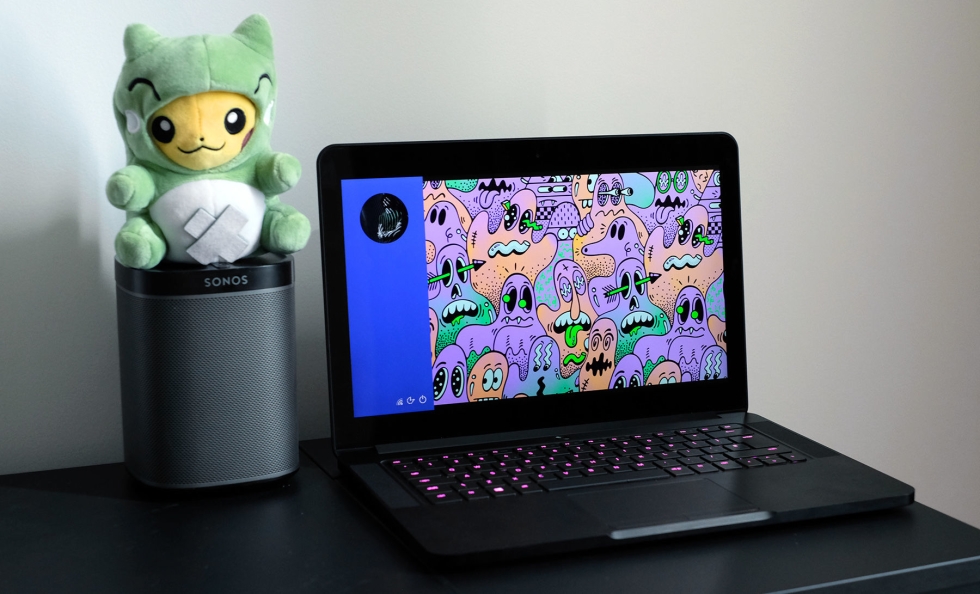
If you’re willing to settle a bit on performance, the 14-inch, 4.1-pound Razer Blade offers a lot for the money. It has full-on NVIDIA GTX 1060 graphics and an optional 4K touch display (which might be overkill for a 14-inch screen), along with Intel’s last-gen i7-7700HQ processor. The best part is the price: Since the 2017 version is overdue to be replaced (it came out in February 2017), Razer has cut it by $200, to $1,700, with a 1080p screen.
ASUS ROG Zephyrus
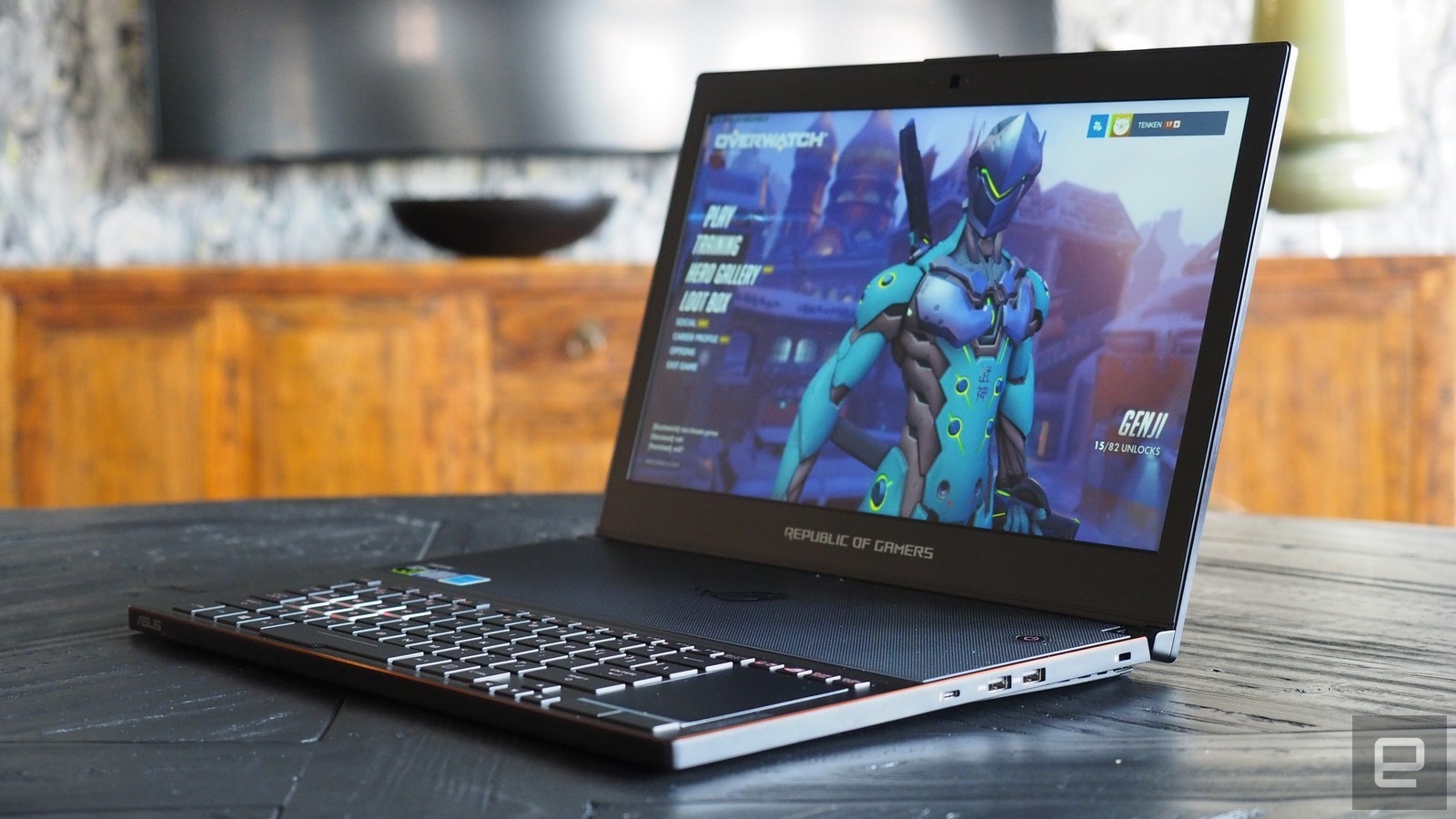
We’ll be the first to admit that the ASUS ROG Zephyrus isn’t for everyone. It squeezes top-flight NVIDIA GTX 1080 Max-Q graphics and an eighth-gen Core-i7 CPU (for the latest model) into a 4.93-pound, 18mm-thick body. The performance is crazy, but the downsides are steep: The battery life is “laughable,” “terrible” and “abysmal,” according to three recent reviews, including Engadget’s. It’s also limited to 1080p resolution and costs $2,700, but if you want a sub-five-pound GTX 1080 laptop, it’s the only one around.
Origin EVO-15S
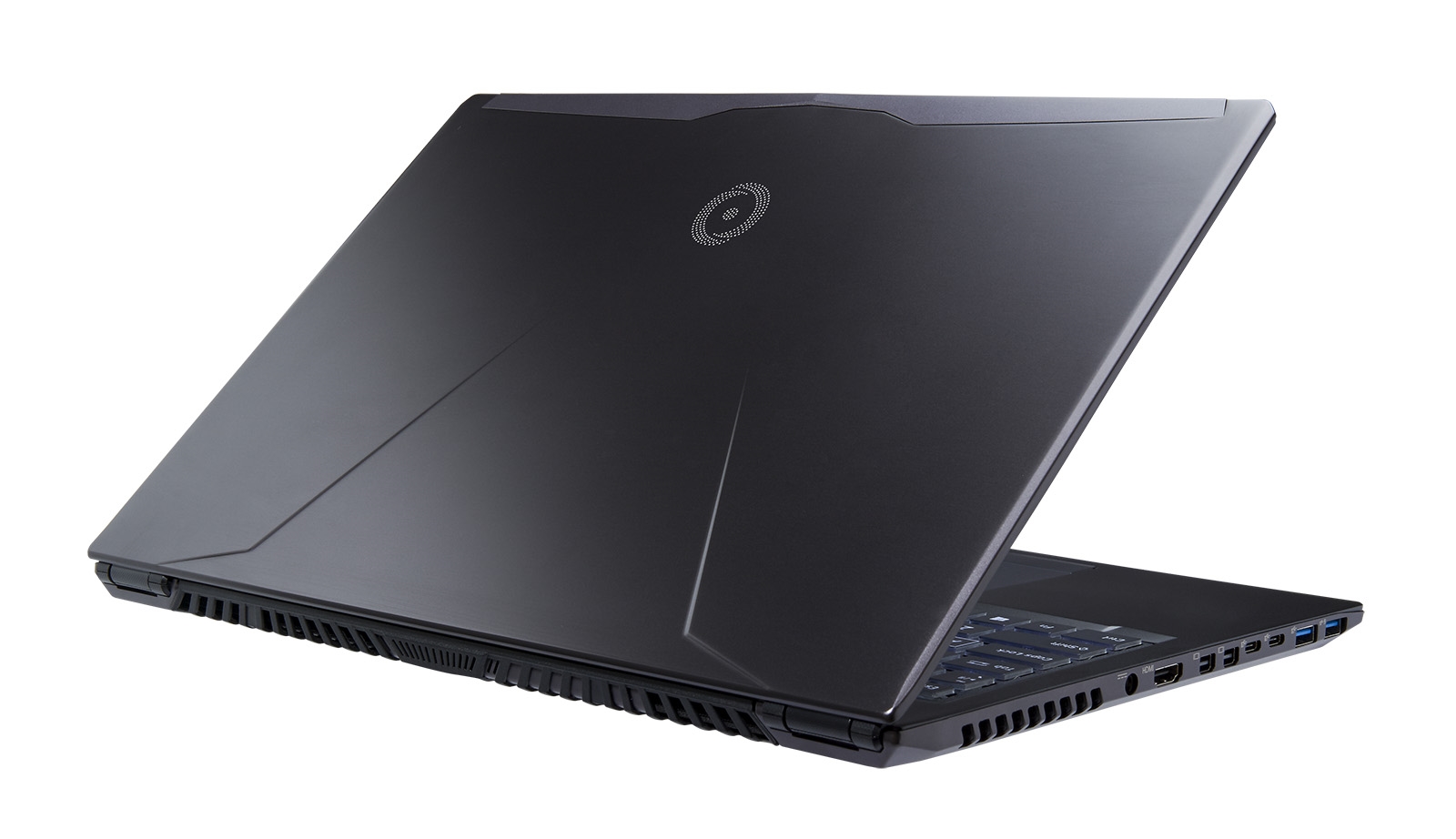
Origin is another company that has embraced NVIDIA’s Max-Q, and its top-end model is the 4.3-pound, $2,000 EVO15-S. As MSI and Gigabyte did with their flagships, Origin just updated it with Intel’s latest eighth-gen, six-core chip, while offering NVIDIA GTX 1070 Max-Q or GTX 1060 graphics. Like its rivals, it also offers 144Hz 1080p and 4K screen options. If budget is an issue, the low-spec model with GTX 1060 graphics costs just $1,621, making it one of the cheapest high-performance, lightweight models.
The best budget lightweight gaming laptops
If you have a more modest budget and don’t need to play The Witcher 3 at 120 fps, good news: There are a lot of lightweight gaming laptop options that still have decent graphics. This category includes laptops with NVIDIA GTX 1050 Ti and the new Intel/AMD Radeon Vega RX Vega M graphics.
HP Omen 15 (2017)
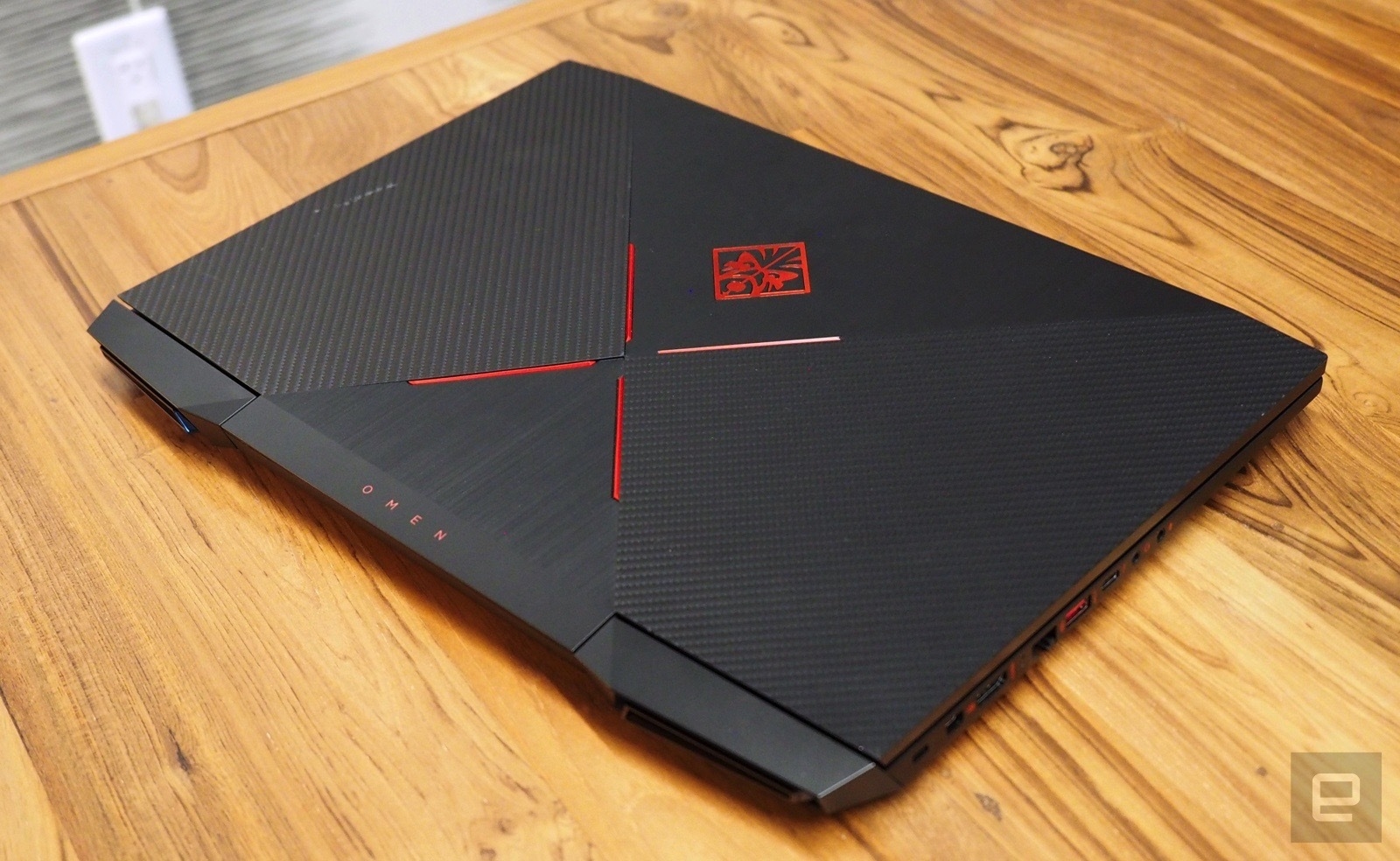
With a 4.8-pound weight, great screen, sporty gaming design and NVIDIA GTX 1050 Ti graphics, there’s a lot to like with HP’s $1,300 Omen 15. It can stand up to Dell’s Alienware lineup for gaming, but does so in a smaller, lighter body. The downsides are battery life, which is pretty bad, and the aforementioned design, which is not ideal for sober graphics work.
Gigabyte Aero 14
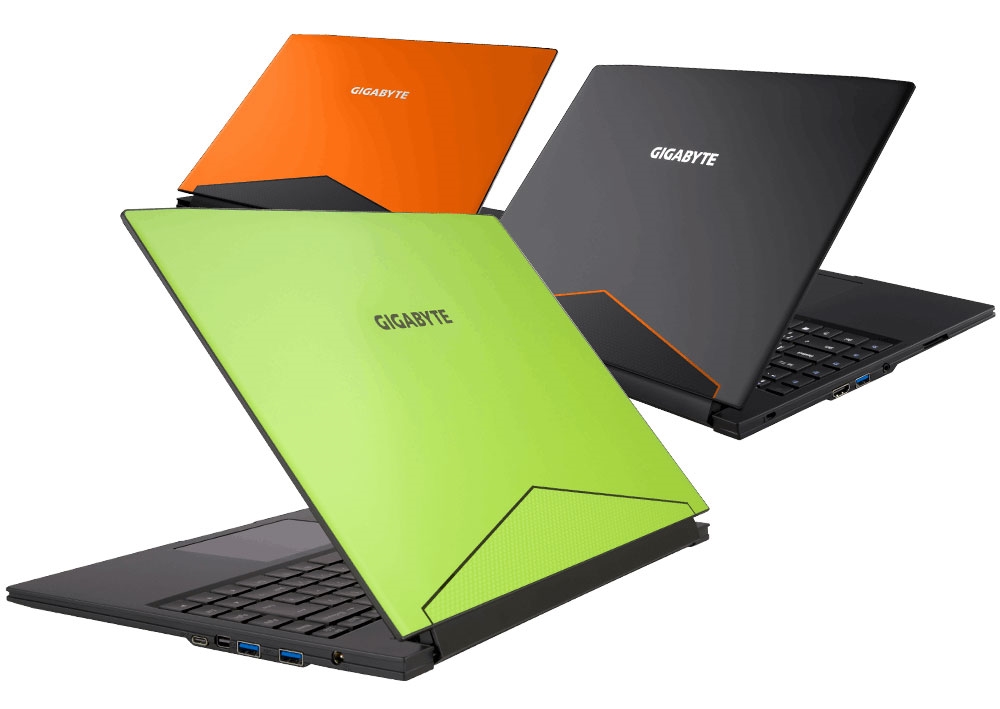
Gigabyte pulled off a nice trick with the Aero 14, offering GTX 1050 Ti graphics, a QHD (2,560 x 1,440) screen, Intel Core i7-7700HQ chip and gigantic 94Wh battery, all in a 4.2-pound package. As on other Aero models, the design is low-key, so it’s suitable for regular work, but you can also get it in bold green or orange colors. The main downside is the $1,500 price (with the 1050 Ti graphics), which is more than similarly specced laptops.
Origin EON15-S
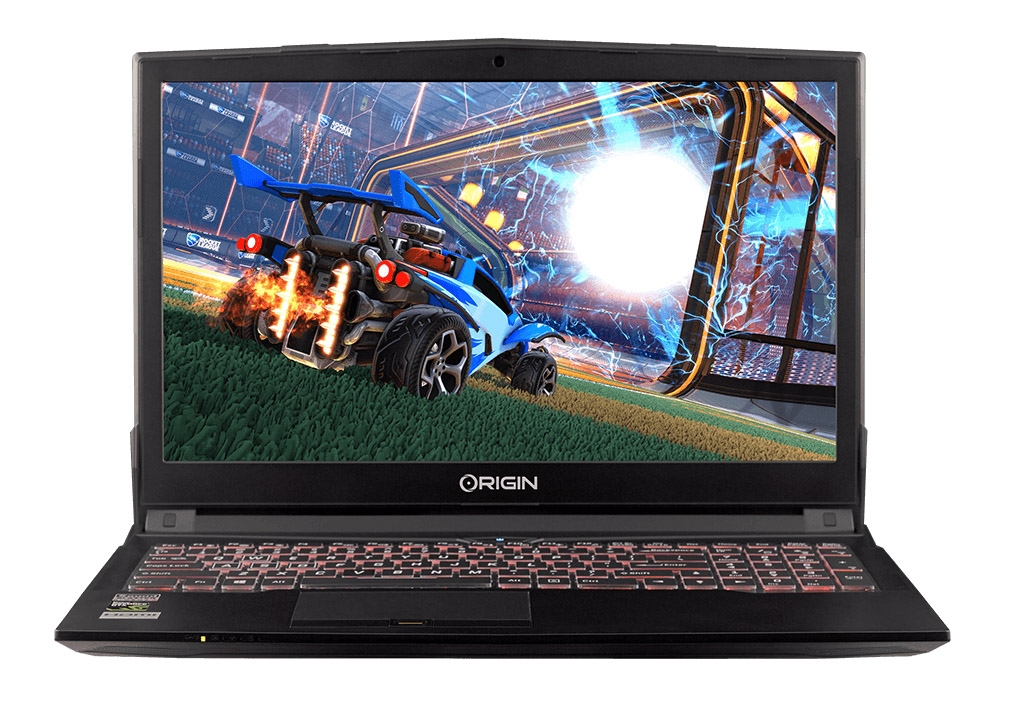
Origin’s EON15-S tips the scales at 5.08 pounds, but since it’s one of the cheapest models with decent gaming performance, we’ll give them a few grams. For $1,160, you get NVIDIA GTX 1050 Ti graphics, a Core i7-7700HQ CPU and 16GB of RAM, making it suitable for serious gaming and video editing or graphics work.
Dell XPS 15 2-in-1 and the HP Spectre x360 15
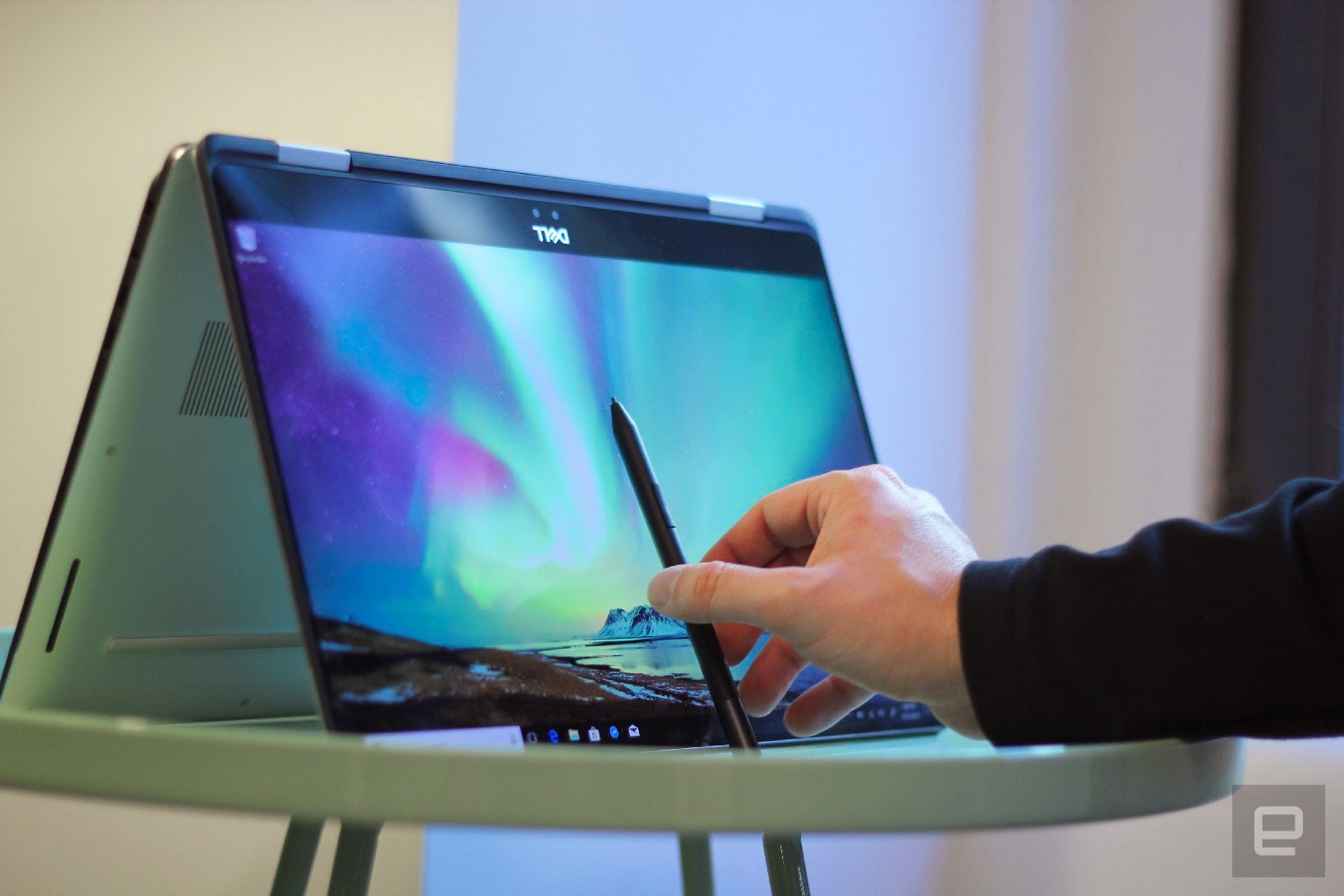
These convertible laptops aren’t really for gaming and have yet to be reviewed or shipped, so don’t consider this a recommendation. But it’s worth mentioning Dell’s XPS 15 2-in-1 and the HP Spectre x360 15, as both are now available to order and carry Intel and AMD’s new RX Vega M tech, which could be game-changing in a number of categories.
Both have the “GL” flavor of the RX Vega M and Intel Core i7 chip combo, which is supposed to offer performance between NVIDIA GTX 1050 Ti and 1060 Max-Q graphics. They also have 360-degree 4K touchscreens with styluses, offer lovely designs and, most important for our category, weigh around 4.5 pounds.
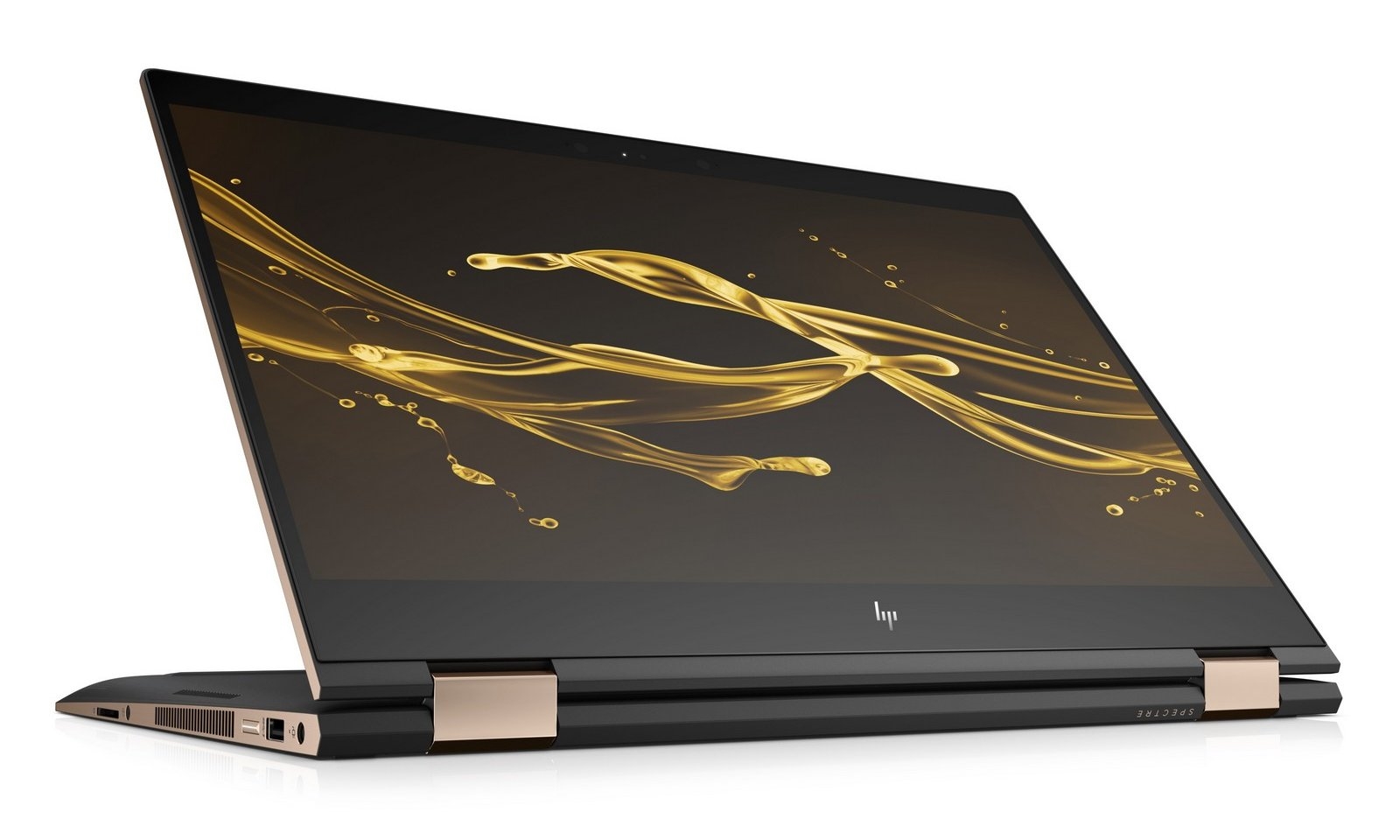
At the same time, HP promises up to 13.5 hours of battery life for the Spectre x360 (above), which would top any GTX 1050 Ti laptops. And both models will cost a reasonable $1,700 with 16GB of RAM and a 256GB SSD. All of this sounds great, but the proof will be in the testing, so we’re reserving judgment until we can get our hands on them.
Wrap-up
I write and work on my computer, but also game and edit photos and videos, and I hardly think I’m unique in demanding one laptop that can do all that. I also like this category because it’s just fun to see how much tech manufacturers can squeeze into a small PC. Luckily, there are a lot more choices for lightweight gaming laptops now than a year ago, especially in the sweet spot between about $1,500 and $2,000. What I’m hoping to see with RX Vega M and future chips from AMD is more of the same, but with even better pricing — and I’m sure I’m not unique in that regard, either.
(73)

